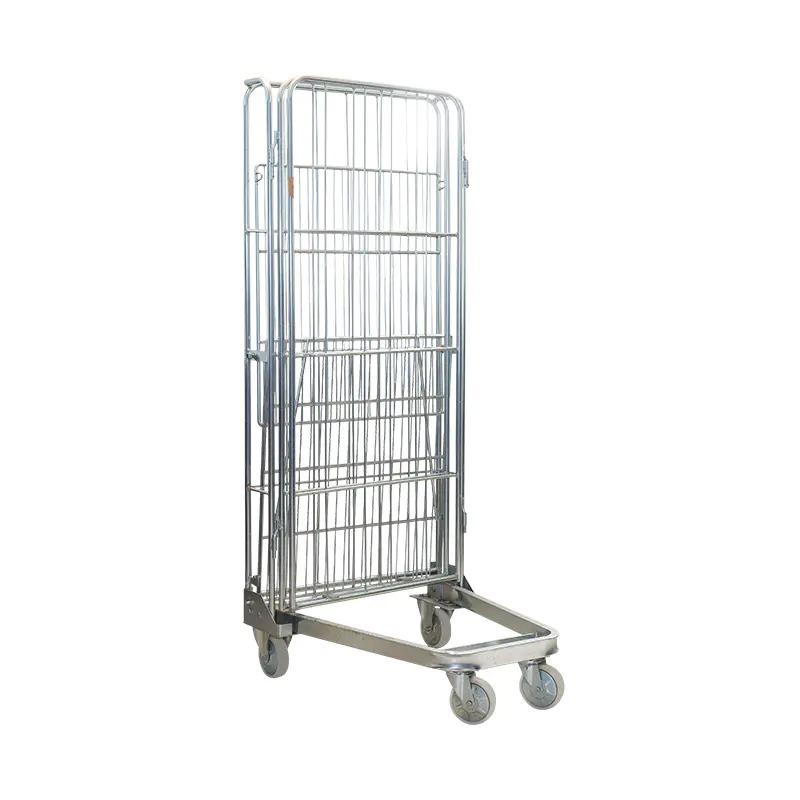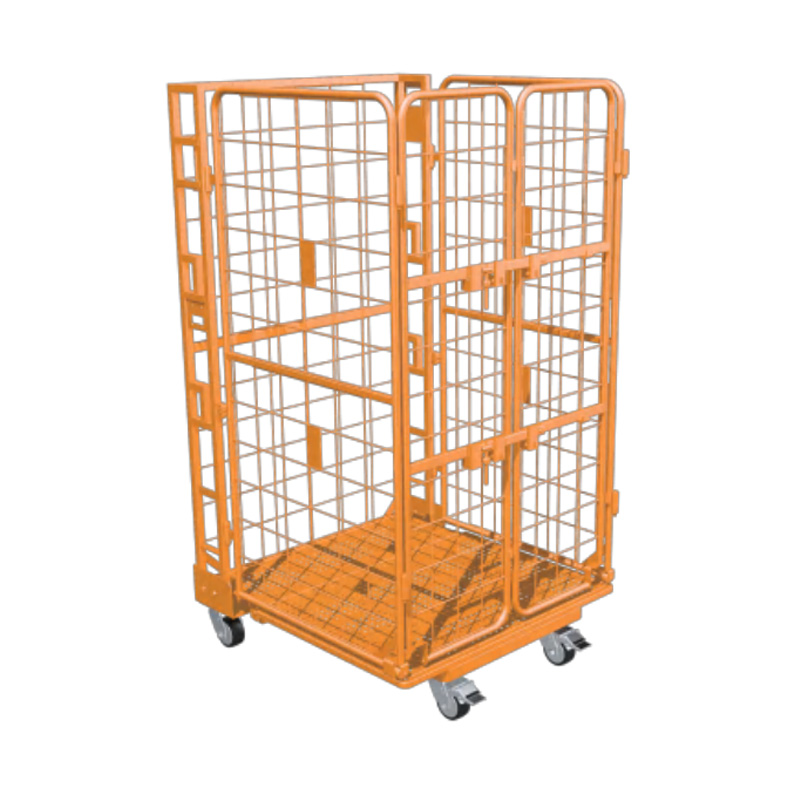Don't hesitate to send a message
Web Menu
Product Search
Exit Menu
How Does the GGD Rack System Differ from Traditional Shelving?
In the complex ecosystem of warehouse management and industrial storage, the selection of the right storage solution is a critical decision with far-reaching implications for efficiency, cost, and safety. For those tasked with optimizing storage space for palletized goods, two primary options often come to the fore: the ggd pallet stacking rack system and various forms of traditional shelving. While both serve the fundamental purpose of storing items, they are engineered for distinctly different applications and operational philosophies. A deep understanding of their differences is not merely an academic exercise; it is a practical necessity for making an informed capital investment that aligns with long-term logistical goals.
Understanding the Fundamental Design Philosophies
At the most foundational level, the divergence between the ggd pallet stacking rack and traditional shelving begins with their core design philosophy. This philosophical difference dictates every aspect of their construction, capacity, and ultimate application within a facility.
The Unit Load Principle of the ggd pallet stacking rack
The ggd pallet stacking rack is conceived around the principle of the unit load. In modern logistics, a unit load is a single item, a number of items, or a bulk material that is arranged and restrained so it can be stored, shipped, and handled as a single entity. The most common example is the pallet. The entire design of a ggd pallet stacking rack is optimized to accommodate these standardized unit loads. Its structure is engineered to support the immense weight and distribute the significant point loads generated by a fully laden pallet, which can easily exceed 2,000 kilograms. The system’s focus is on the efficient handling of goods in bulk by material handling equipment like forklifts and pallet jacks. This makes the ggd pallet stacking rack an integral component of the movement and storage flow within a warehouse, acting as a static partner to dynamic handling equipment. Search terms like heavy duty pallet storage and forklift accessible racking directly relate to this core strength.
The Individual Item Focus of Traditional Shelving
In contrast, traditional shelving, including varieties like boltless shelving or industrial shelving units, is designed with a focus on individual items, boxes, or cartons. Its philosophy is rooted in manual accessibility and organization. The shelves provide multiple, smaller surfaces for storing a wide variety of products that are not palletized and are typically handled by personnel on foot. The structural design is geared towards a more distributed, lighter load across each shelf level. This makes traditional shelving ideal for small parts storage, maintenance rooms, tool cribs, and retail backrooms where selective picking of individual items is the primary activity. The operational model is one of manual selection and order fulfillment, rather than the bulk movement of goods.
A Comparative Analysis of Structural Design and Load Capacity
The differing philosophies of these two storage systems manifest most clearly in their physical construction and performance specifications. The following table provides a direct comparison of their key structural characteristics.
| Feature | ggd pallet stacking rack | Traditional Shelving |
|---|---|---|
| Primary Load | Palletized unit loads | Individual items, cartons, boxes |
| Typical Capacity | Very High (1,000 kg - 3,000 kg per level) | Low to Medium (50 kg - 500 kg per shelf) |
| Structural Framework | Heavy-duty steel frames with high-strength welds | Lighter gauge steel uprights and shelves |
| Load Surface | Robust, dynamically balanced arms or rails | Solid, perforated, or wire decking shelves |
| Primary Stability | Interlocking design when stacked; load distribution | Free-standing unit; bolted or clip-in connections |
Engineering for Weight and Dynamic Forces
The ggd pallet stacking rack is a feat of industrial engineering designed to manage extraordinary weights and the dynamic forces imposed during loading and unloading. When a forklift places a pallet onto the arms of the rack, it creates both a vertical load and a significant moment force. The rack’s design, often featuring a beveled or stepped profile, is calculated to counteract these forces, ensuring the load remains stable and the structure does not tip or collapse. The steel used is of a higher thickness and tensile strength than that typically found in shelving. This robust construction is what makes the system suitable for high density pallet storage, allowing warehouses to safely utilize their vertical cube to its fullest potential.
Traditional shelving, while sturdy for its intended purpose, is not engineered to withstand these same dynamic forces. The act of a forklift placing a heavy pallet onto a shelf would likely cause catastrophic failure. The loads on shelving are static and manually applied. The shelving’s stability is derived from its base, its bolted connections, and sometimes its attachment to a wall or other units. Its capacity is a fraction of that of a ggd pallet stacking rack, making it unsuitable for the demands of bulk pallet storage. For buyers, understanding this distinction is critical for safety and operational integrity; confusing the two systems can lead to dangerous and costly accidents.
Operational Flexibility and Space Utilization
Beyond mere strength, the way these systems integrate into and adapt to a warehouse’s operational workflow is a key differentiator. This encompasses everything from configuration to reconfigurability.
The Freestanding and Scalable Nature of the ggd pallet stacking rack
A defining characteristic of the ggd pallet stacking rack is its freestanding and modular nature. Each rack is a self-contained unit that can be used independently or stacked securely atop another to form a stable, multi-tier storage structure. This design offers immense flexibility. Operations can start with a single level and expand vertically as inventory grows, without needing to reconfigure an entire system. This nestable pallet rack design also means that when not in use, the racks can be disassembled and nested inside one another, resulting in a dramatic saving on storage space compared to permanent structures. This feature is highly valued in industries with seasonal fluctuations or those that require flexible warehouse storage solutions. The ability to easily relocate a stack of racks to a different part of the facility provides a level of adaptability that fixed systems cannot match.
The Fixed Configuration of Traditional Shelving
Traditional shelving is generally configured as a fixed unit. While many systems are adjustable in terms of shelf height, the overall footprint and structure of the shelving bay are permanent once assembled. Reconfiguring a large section of shelving to accommodate a different product mix or to change the warehouse layout is a labor-intensive process. Furthermore, shelving typically requires clear aisles for personnel access, which can limit storage density. While shelving is excellent for creating an organized environment for small parts picking, it is not designed for the high-density, high-turnover environment of palletized goods. Its space utilization is often less efficient for bulk items because it cannot safely store the same mass of goods in the same vertical airspace.
Accessibility and Inventory Management Methodology
The method by which goods are stored, accessed, and managed is another area where these two systems diverge significantly, directly impacting labor efficiency and inventory control protocols.
FIFO and Block Stacking with the ggd pallet stacking rack
The ggd pallet stacking rack is inherently suited for both First-In, First-Out (FIFO) and block storage methodologies. Because each pallet position is directly accessible by forklift from the aisle, it is easy to manage inventory rotation. This is crucial for goods with expiration dates or those subject to product cycles. Furthermore, the ability to stack loaded racks creates a very dense block stacking formation, which is ideal for storing large quantities of the same SKU. This maximizes the use of the warehouse’s cubic volume, a key metric in storage economics. The system works in harmony with warehouse management systems where each pallet location can be tracked, and the physical access aligns with the digital instruction for a forklift operator to retrieve a specific load.
Selective Access and SKU Proliferation on Shelving
Traditional shelving excels at selective access. Every box, bin, or item on a shelf is visible and accessible to a worker walking down the aisle. This makes it the superior choice for order picking efficiency in environments with a high number of SKUs and low pick quantities, such as in e-commerce fulfillment or service parts departments. However, this selectivity comes at the cost of density. The wide aisles required for personnel and picking carts consume valuable floor space. Inventory management on shelving often involves bin locations and is better suited for a pick-and-pass or zone-picking model rather than the full-pallet retrieval that the ggd pallet stacking rack facilitates.
Cost Considerations and Total Cost of Ownership (TCO)
The initial purchase price is only one component of the financial analysis. A thorough evaluation must consider the Total Cost of Ownership (TCO), which includes durability, maintenance, and operational impact.
Durability and Long-Term Value of the ggd pallet stacking rack
While the initial investment per unit for a ggd pallet stacking rack may be higher than a bay of shelving, its longevity and durability often result in a lower TCO. Constructed from high-tensile steel and built to withstand harsh industrial environments, including impacts from forklifts, these racks have an exceptionally long service life. They are a capital asset that, with proper use, will last for decades. The cost is justified by the value it protects—the thousands of dollars worth of inventory stored safely upon it. The reduction in product damage from collapsed shelving or improper storage is a significant, though often overlooked, cost saving. For a buyer, this translates into a cost effective storage solution over a multi-year horizon.
The Acquisition Cost and Limitations of Shelving
Traditional shelving often wins on initial acquisition cost for light-duty applications. It is a more economical solution for storing non-palletized, lower-value goods. However, its TCO can be higher in an inappropriate application. If shelving is overloaded or damaged, it may need to be replaced entirely. Its lower weight capacity also means that as a business grows and begins to handle more palletized goods, the shelving becomes obsolete, requiring a full and costly replacement with a pallet-rated system like the ggd pallet stacking rack. This potential for obsolescence must be factored into the buying decision.
Making the Informed Choice: A Summary of Applications
The choice between a ggd pallet stacking rack system and traditional shelving is not a matter of one being universally better than the other; it is about selecting the right tool for the specific task.
The ggd pallet stacking rack is the unequivocal choice for:
- Storing palletized goods in bulk.
- Applications requiring high weight capacity.
- Environments utilizing forklifts for load handling.
- Maximizing vertical storage density in a warehouse.
- Operations that require flexibility and reconfigurability.
- Implementing FIFO inventory management for pallet loads.
Conversely, traditional shelving remains the ideal solution for:
- Storing small parts, tools, and cartons.
- Environments where manual picking and access are primary activities.
- Storing a wide variety of SKUs in a organized, visible manner.
- Applications with lower weight requirements per storage location.
- Support areas like tool rooms, maintenance shops, and retail stockrooms.
-

Product specification:This Warehouse wire mesh Multi-Tier Order Picking Trolley adopts a chassis and side panel structur...
See Details -
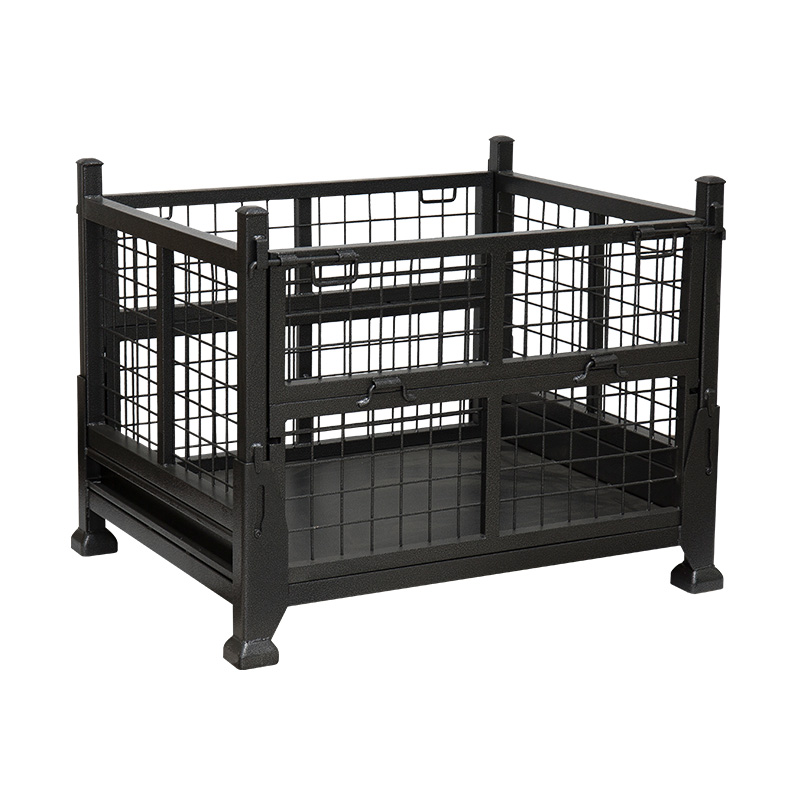
Foldable pallet cages are an important tool in factory logistics. They play an important role in transportation, distrib...
See Details -
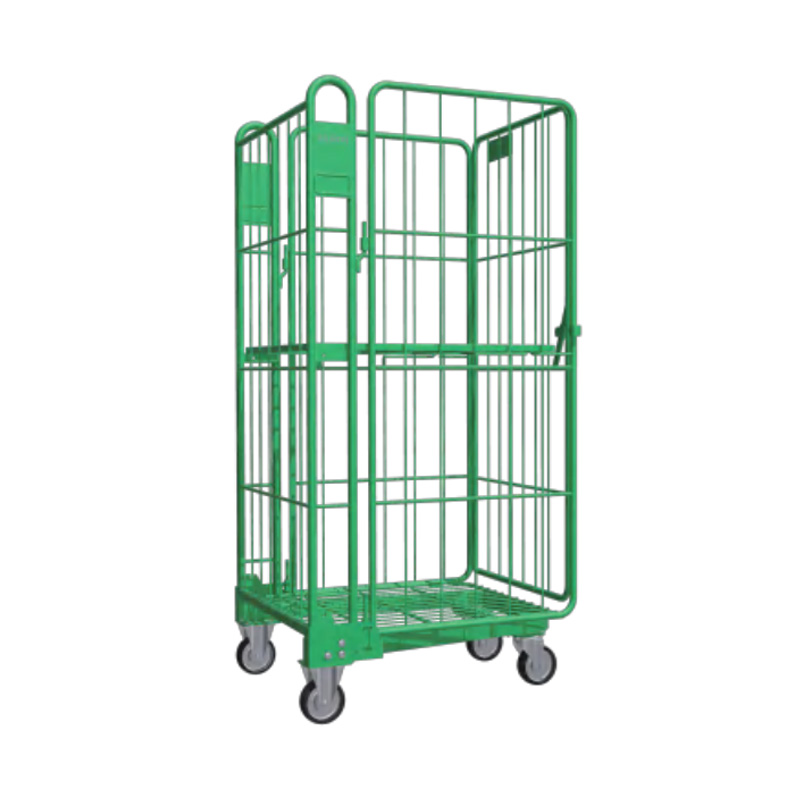
Product specification:The chassis is made of a square tube frame, with a bottom metal sheet tray that can be folded up a...
See Details -
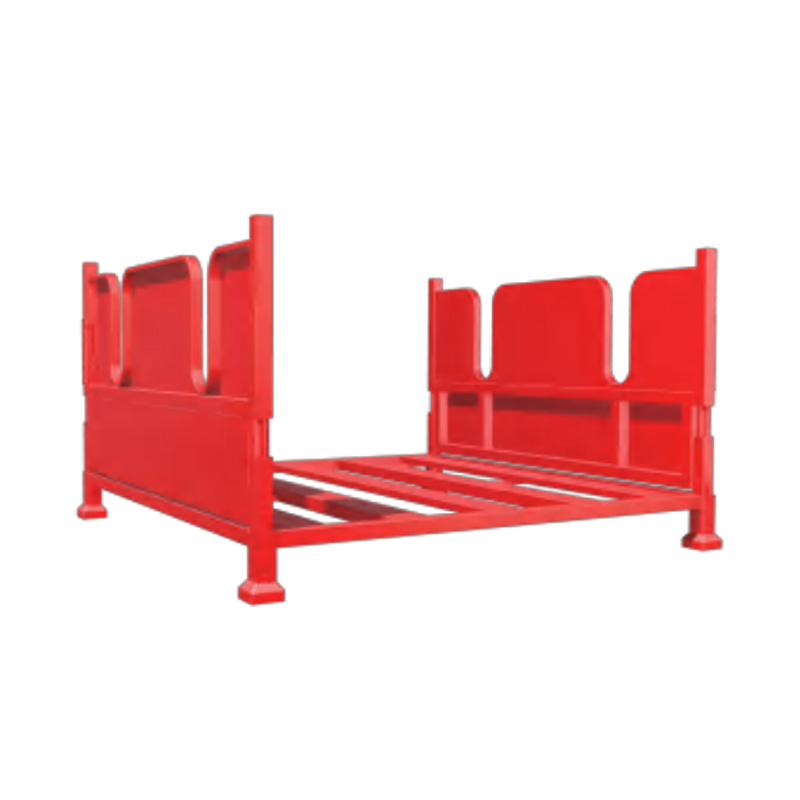
Stacking rack, also known as Qiaogu rack or stacking rackIt is a transportation and storage device derived from pallets ...
See Details -

Product specification:Container structure made of L-Type plate frame with 50×50 wire mesh, with base support.Surface tre...
See Details
-
Building B5, No. 138, Weixi Road, Weixi Village, Weitang Town, Xiangcheng District, Suzhou City, China.
-
Tel:
+86-13862140414
+86-13951110334 -
Phone: +86-512-65905480

